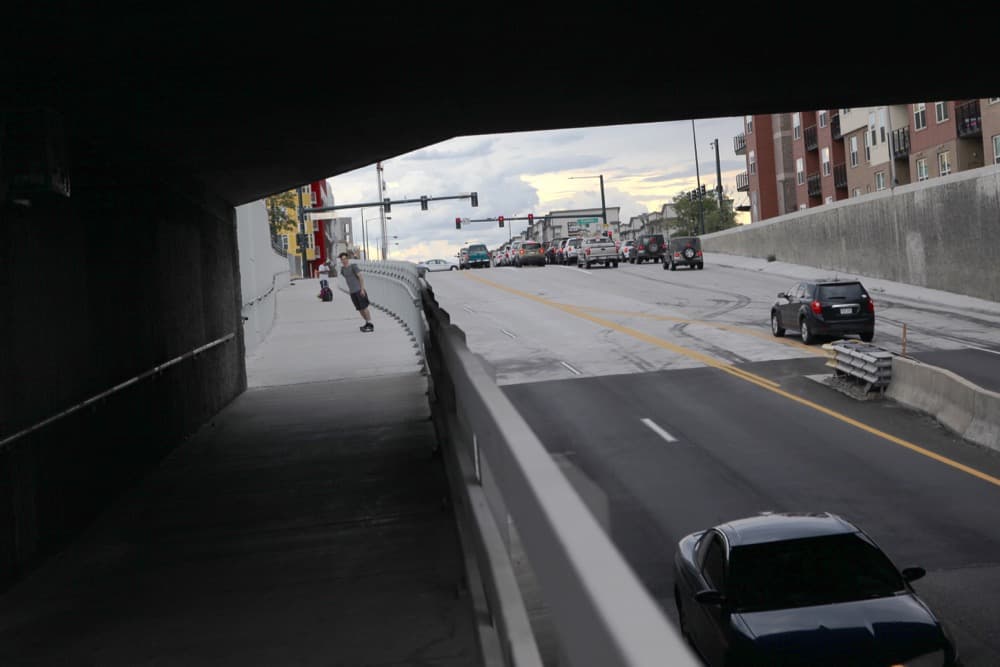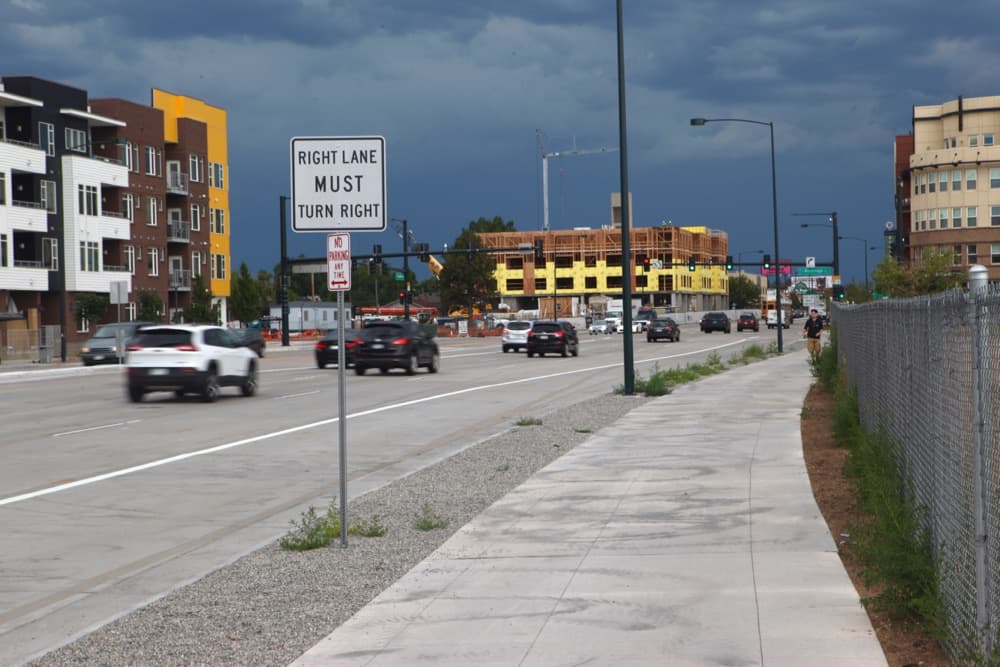
Construction crews have officially finished their work on a half-mile stretch of South Broadway and several blocks of Mississippi Avenue, which should make life a lot easier for the steady stream of cyclists and pedestrians moving into the area's new apartments.
Don't put away your construction vest just yet, though.
This was just one sizable step toward the grander plan to make the Interstate 25 and Broadway rail station into the hub of a "midtown" area several miles south of downtown, where light-rail trains pass every few minutes over a busy throughway flanked by new apartments, dusty lots and half-built developments.
"It’s a changing area, moving from an industrial land use and a highway to much more of a neighborhood feel," said Crissy Fanganello, director of transportation and mobility for Denver.
There's already anther upcoming project to rebuild the highway interchange itself, along with some hazier ideas about further bike and pedestrian connections.
Broadway got more walkable, but it also got more lanes.
The $12 million revamp of Broadway included lots of work on the street itself between Kentucky and Arizona avenues over the last 16 months. It included the replacement of pavement with concrete and the addition of several lanes on parts of Broadway.
For walkers and cyclists, the benefit is new, uninterrupted blocks of paths along Broadway and Mississippi.
An elevated walking and cycling path along the trench of Mississippi Avenue, for example, has replaced the skinny sidewalks that once squeezed Fred Olguin's walking route to the heavy equipment outfitter where he works.
"When they first started, it was a pain in the ass," he said. Now, "(i)t's wider and newer. It's more walkable."
The city is describing the new, wider walkways as "multi-use paths," meaning you can bike them too. They're wider, smoother and they've got more separation from the road, including trees (yes, trees) in parts. It's a definite improvement for people on foot, and cyclists can take advantage too.
"I think most folks were probably not riding on Broadway. They were trying to access the station area through side streets," Fanganello said. "This makes a more direct contact."
However, there's also an argument that the project made Broadway a tougher stretch for cyclists and pedestrians. The project came with anywhere from one to three extra lanes of automobile traffic, bringing parts of Broadway to nine lanes in width. As David Sachs argues, the extra traffic, noise and other difficulties may cancel out some of the project's benefits for pedestrians.

Also, these beefed-up sidewalks are nowhere near as speedy for cyclists as the protected on-street bike lanes that the city has been piloting several blocks farther north on Broadway. While they'll help you pick your way down Broadway more safely, I didn't see much signage that made it clear which areas were legal for bicyclists.
Still, Jason Iverson, a daily RTD rider, thinks it's a solid improvement toward the city's longer-term visions for the area. "It seems ... the walking spaces they put in have been ample," he said, fighting through a sudden, dusty gale as he walked toward the station.
"A lot of the (previous) projects along the light rail didn't seem to take that into account."'

Now, get ready for more construction.
Are you enjoying this moment of non-construction zen? Too bad. This is Denver.
Denver staff now are getting ready to rebuild the southbound onramps that connect Broadway to I-25 southbound. It's expected to be a fairly dramatic change, which of course means lots more construction.
The city also plans to rebuild another block of Broadway just north of I-25. That change is meant to reduce the traffic backups caused by the onramp, and should make it a bit easier to bike and walk north toward downtown.
We should know more about the plan this October.
Eventually, I-25 & Broadway could become a high-density "midtown."
The city's long-term idea is to create better bike and pedestrian connections to the area's light rail station, better connecting it to a network of sidewalks and to the South Platte River trail.
"That’s the ultimate vision: to have a well-connected bike corridor on Broadway," Fanganello said.
One possibility is that the city will connect the neighborhoods west of the South Platte River to the rail station and Broadway with bridges over the river and the rail lines, as suggested in Denver's long-term plans.













